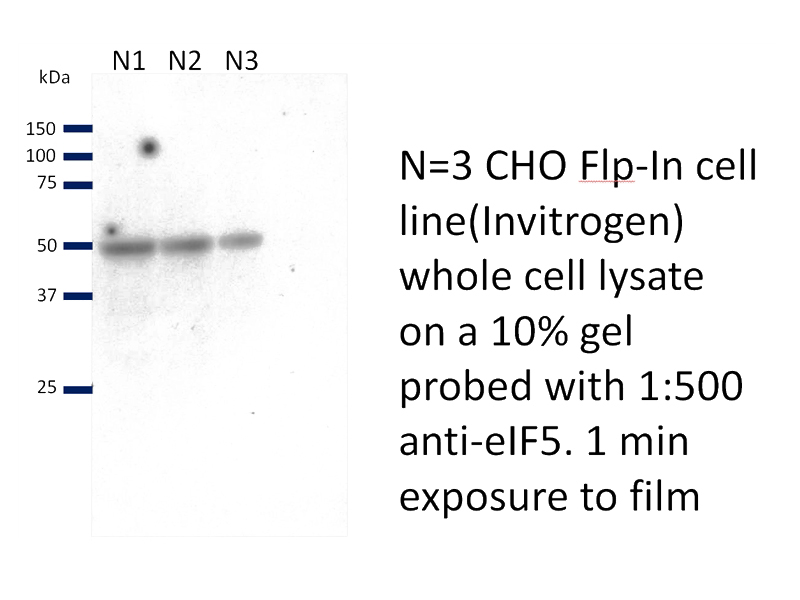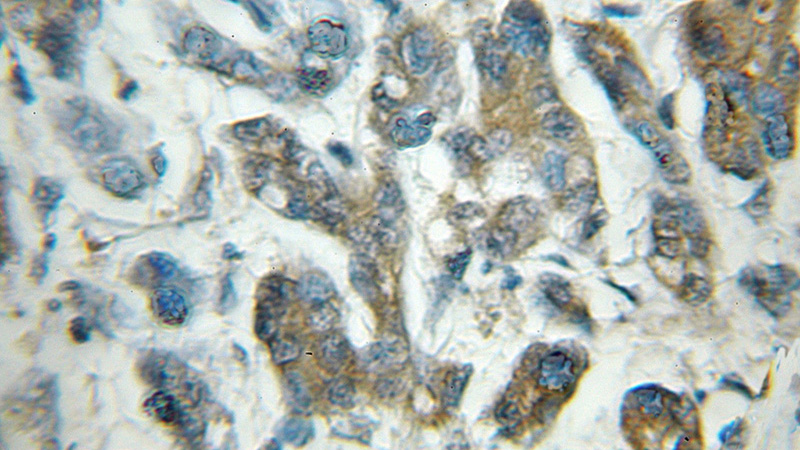-
Product Name
EIF5 antibody
- Documents
-
Description
EIF5 Rabbit Polyclonal antibody. Positive WB detected in CHO cells. Positive IHC detected in human pancreas cancer tissue. Observed molecular weight by Western-blot: 50 kDa
-
Tested applications
ELISA, IHC, WB
-
Species reactivity
Human,Mouse,Rat; other species not tested.
-
Alternative names
eIF 5 antibody; EIF 5A antibody; EIF5 antibody
-
Isotype
Rabbit IgG
-
Preparation
This antibody was obtained by immunization of EIF5 recombinant protein (Accession Number: NM_183004). Purification method: Antigen affinity purified.
-
Clonality
Polyclonal
-
Formulation
PBS with 0.1% sodium azide and 50% glycerol pH 7.3.
-
Storage instructions
Store at -20℃. DO NOT ALIQUOT
-
Applications
Recommended Dilution:
WB: N/AIHC: 1:20-1:200
-
Validations

WB result of EIF5 antibody (Catalog No:110266, 1:500) with CHO cell lysate by Dr. Emma Hargreaves.

Immunohistochemical of paraffin-embedded human pancreas cancer using Catalog No:110266(EIF5 antibody) at dilution of 1:50 (under 10x lens)
-
Background
Eukaryotic translation initiation factor 5, also named as EIF5, is a 431 amino acid protein, which contains one W2 domain and belongs to the eIF-2-beta/eIF-5 family. EIF5 catalyzes the hydrolysis of GTP bound to the 40S ribosomal initiation complex with the subsequent joining of a 60S ribosomal subunit resulting in the release of eIF-2 and the guanine nucleotide. EIF5 plays multiple roles in translation initiation.
Related Products / Services
Please note: All products are "FOR RESEARCH USE ONLY AND ARE NOT INTENDED FOR DIAGNOSTIC OR THERAPEUTIC USE"
